
This parent guide supports parents in helping their child at home with the 6th grade Social Studies content.
- Subject:
- Social Studies
- Material Type:
- Reference Material
- Vocabulary
- Author:
- Kelly Rawlston
- Letoria Lewis
- Date Added:
- 10/12/2022

This parent guide supports parents in helping their child at home with the 6th grade Social Studies content.

This resource accompanies our Rethink 6th Grade Social Studies course. It includes ideas for use, ways to support exceptional children, ways to extend learning, digital resources and tools, tips for supporting English Language Learners and students with visual and hearing impairments. There are also ideas for offline learning.

Containing more than 50 articles from the award-winning Tar Heel Junior Historian magazine and over 40 lesson plans, this multidisciplinary Educator Notebook will enrich your exploration of North Carolina and American history with diverse perspectives. This resource's link takes you to a very short form that gives you free downloadable access to the complete PDF book.
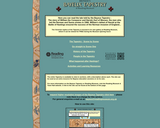
This web site allows students to view parts of the Bayeux Tapestry which tells the story of early Enligh History through a series of pictures. The activities attached to it allow students to create their own tapestry story along with the creation of objects from the time period. There are also suggestions for ways to tie the tapestry in with other subject areas.
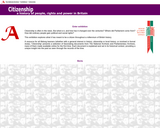
This exhibition explores what it has meant to be a citizen throughout a millennium of British history. Click through to find full documents from each time period, as well as a quiz page.
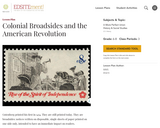
Drawing on the resources of the Library of Congress's Printed Ephemera Collection, this lesson helps students experience the news as the colonists heard it: by means of broadsides, notices written on disposable, single sheets of paper that addressed virtually every aspect of the American Revolution.

In this lesson, students will analyze 16 political cartoons drawn by Clifford and Jim Berryman during the early to mid-20th century. They will search through the Constitution and associate each cartoon with a specific clause. Through networking exercises, students will analyze all 16 cartoons and read the entire Constitution. They will learn about the outline and structure of the Constitution, as well as the content of many of its clauses.
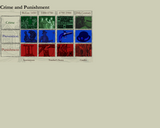
This exhibition covers the themes of crime, prevention, and punishment during different time periods. There are 12 galleries altogether, each with a key question, a worksheet, and a number of case studies.
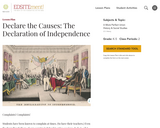
Students read and discuss the Founding Fathers of our country indulgence in gripe sessions. In fact, a list of grievances comprises the longest section of the Declaration of Independence; however, the source of the document's power is its firm philosophic foundation. You can capitalize on the inclination of your students to complain to increase student awareness of the precedents behind the Declaration of Independence. Students will summarize the contributions of the "Founding Fathers" to the development of our county as well as explain how key historical figures exemplified values of American democracy.
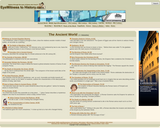
This page provides a variety of primary and secondary resources related to ancient civilizations.
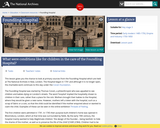
This lesson examines primary sources from the Foundling Hospital in London and poses questions about how things were run and what life was like for a child under their care.
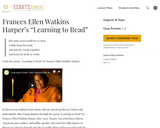
In this lesson students do a close reading of “Learning to Read,” a poem by Francis Watkins Harper about an elderly former slave which conveys the value of literacy to blacks during and after slavery. The activities also prompt students to examine the nature of literacy in the 21st century and the value they put upon it.
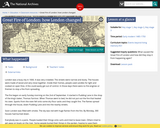
This lesson discusses the Great Fire of London in 1666 and its causes as well as its repercussions long after.
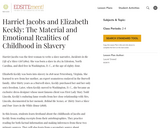
In this lesson, students learn firsthand about the childhoods of Jacobs and Keckly from reading excerpts from their autobiographies. They practice reading for both factual information and making inferences from these two primary sources.
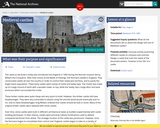
This resource discusses the purpose and significance of castles during medieval times, following their introduction in 1066.

This course was created by the Rethink Education Content Development Team. This course is aligned to the NC Standards for 6th Grade Social Studies.

This course was created by the Rethink Education Content Development Team. This course is aligned to the NC Standards for 6th Grade Social Studies.

In this unit, students will study what common interests and goals lead to the rise of great civilzations, the political leadership and government influence on ancient cultures, and what common factors broght about the decline of notable civilizations.

This unit will view different cultures from around the world in an attempt to see how they developed and to find similarities and differences in the way they developed and the way they lived.

In this activity, students will determine the similarities between three early river valley civilizations - Mesopotamia, India, and China - focusing on government/laws, religion, and social structure. Students will write an essay using examples from all three civilizations.